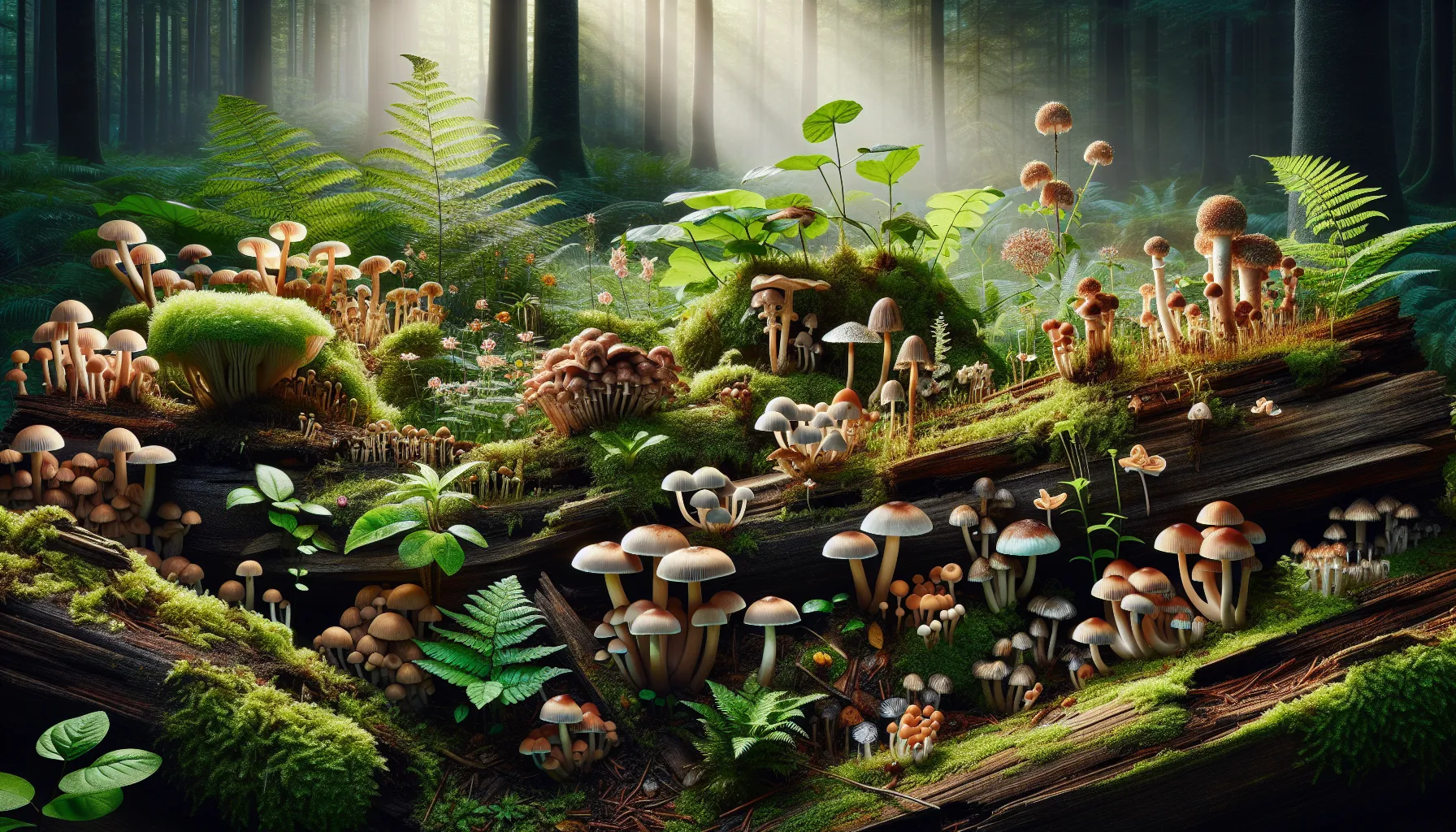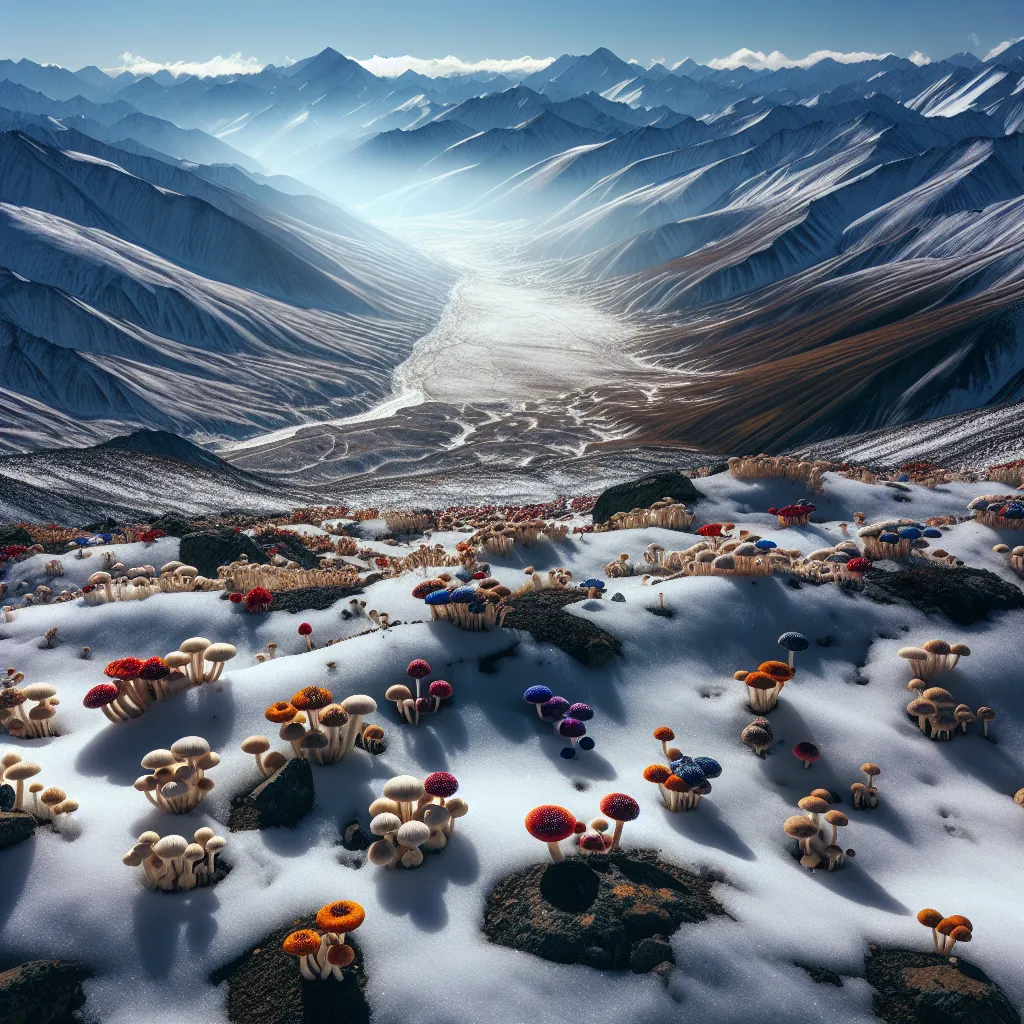Mushrooms, the fruiting bodies of fungi, offer a fascinating glimpse into the complexities of ecosystems around the world. These organisms play a critical role in their habitats, functioning as decomposers, symbionts, and sometimes even as parasites. This article embarks on an exploration of different mushroom ecosystems, revealing the intricate relationships and the ecological significance of these enigmatic kingdoms.
The Forest Floor: Deciduous Woodlands
Deciduous forests, with their rich, moist soils and abundant organic matter, provide an ideal setting for a diverse array of mushroom species. As leaves fall and wood decays, mushrooms such as the Shiitake (Lentinula edodes) and the Lion’s Mane (Hericium erinaceus) break down this organic material, returning nutrients to the soil and supporting the cycle of life within the forest.
These woodlands are not only a haven for saprophytic mushrooms that feed on dead matter but also for mycorrhizal species like the Chanterelle (Cantharellus cibarius). These mushrooms form a mutualistic relationship with the roots of trees, exchanging nutrients in a delicate balance that supports both the forest and the fungi.

For a deeper understanding of the role of mushrooms in deciduous forests, the Mycological Society of America (Mycological Society of America) provides a wealth of information on fungal ecology and conservation.
The Hidden Networks: Mycorrhizal Relationships in Coniferous Forests
Coniferous forests are characterized by their evergreen trees and acidic soils. Here, mycorrhizal mushrooms such as the Pine Mushroom (Tricholoma magnivelare) and the King Bolete (Boletus edulis) are integral to the health of the ecosystem. These fungi extend the root systems of conifers, facilitating the absorption of water and minerals, and in return, they receive carbohydrates produced by the trees through photosynthesis.
This symbiotic relationship is crucial, especially in nutrient-poor environments. The North American Mycological Association (North American Mycological Association) offers insights into the diversity of mycorrhizal fungi and their importance to coniferous forests.
The Grassland Companions: Mushrooms in Meadows and Prairies
Grasslands and prairies may seem less hospitable to mushrooms due to their exposure to the elements and less obvious organic material. However, species like the Meadow Mushroom (Agaricus campestris) and the Puffball (Lycoperdon perlatum) are well-adapted to these conditions. They play a key role in breaking down the tough fibers of grasses and other herbaceous plants, recycling nutrients, and maintaining soil health.
The International Society for Fungal Conservation (International Society for Fungal Conservation) highlights the importance of fungi in grassland ecosystems and the need to protect them from agricultural and urban development.
The Specialists: Mushrooms in Extreme Environments
Some mushrooms have adapted to thrive in extreme environments, from the high-altitude realms of alpine ecosystems to the heat of desert landscapes. For instance, the Snowbank Mushroom (Hygrophorus chrysodon) is found near melting snowbanks in alpine regions, while the Desert Truffle (Terfezia sp.) survives in arid conditions by forming partnerships with desert plants.
These specialized fungi demonstrate the adaptability and resilience of mushrooms, and their study can offer insights into survival strategies in the face of climate change. The Fungal Diversity Survey (Fungal Diversity Survey) focuses on documenting and understanding these unique fungal communities.

The Urban Foragers: Mushrooms in the City
Even in urban environments, mushrooms find a way to flourish. Species like the Oyster Mushroom (Pleurotus ostreatus) can be found growing on trees and woodchips in city parks, while others colonize mulched garden beds and compost heaps. These urban mushrooms are not just survivors; they can be allies in waste decomposition and soil remediation efforts.
Organizations such as Radical Mycology (Radical Mycology) offer guidance on how mushrooms can be integrated into urban ecosystems for environmental benefits.
Conclusion
Mushrooms are a testament to the beauty and intricacy of nature’s systems. From the forest floor to the urban jungle, they play a pivotal role in sustaining the ecosystems they inhabit. This journey through different mushroom kingdoms has highlighted not only the diversity of fungi but also their ecological importance and the need for their conservation.
As we’ve explored, mushrooms connect the web of life in ways that are often unseen but always integral. They are decomposers, partners, and survivors, adapting to the most challenging environments and enriching the land. Understanding and respecting these complex relationships is key to preserving the delicate balance of our planet’s ecosystems.
In the end, the kingdom of fungi is a remarkable realm that warrants further exploration, study, and appreciation. It’s through these efforts that we can ensure the continued flourishing of the Mushroom Kingdoms and all they support in the intricate tapestry of life.
